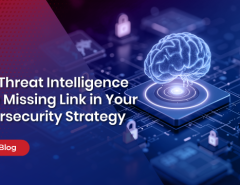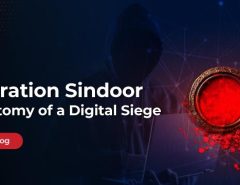In 2015, the Government of India established a first of sorts – they created a chief cybersecurity officer position under the Prime Minister’s Office. Dr Gulshan Rai became the special secretary for cybersecurity and after serving four years in office, was followed by Lt Gen Rajesh Pant who took over as National Cyber Coordination Centre chief.
In 2016, the United States Government created the office of the Federal Chief Information Security Officer. Reporting to the US Chief Information Officer, the main task of the office was to guide the government in terms of cybersecurity policy, planning and implementation. The current Federation Chief Information Security Officer is Grant Schneider.
Cybersecurity & the C-Suite
The above two examples provide an important indicator towards the outlook with which cyber threats are being viewed by governments – they realize the impact of growing cyber threats and feel the need to appoint a dedicated officer to develop strategies to counter these.
Enterprises could also take a leaf out of the government’s book.
Today the roles of the Chief Information Security Officer (CISO) & the Chief Cybersecurity Officer are interchangeable.
Such roles have become vital as enterprises have begun to understand the growing threat climate that they operate in.
Cybersecurity is a job which now needs attention round-the-clock, the execution of which can only be conducted by experts in this field – as enterprises embrace this realization, there is a change in outlook towards this role.
Hence, enterprises contemplating the need to appoint a chief cybersecurity officer should consider the following –
How is the top leadership viewing cybersecurity?
As organizations are quickly understanding, cybersecurity is everyone’s business.
Neglecting cybersecurity has consequences in more ways than one and a security-first mindset can only be inculcated from the top. Appointing a chief cybersecurity officer brings this topic right into the C-suite and hopefully also the board, ensuring there are regular conversations about different aspects of cybersecurity like threat assessment, data protection, regulatory compliance, etc.
The end result is better growth
2018 was a terrible year for businesses in terms of cyberattacks.
It has made enterprises realize that cyber protection cannot be a reactionary move. Today’s operative environment of most businesses is such that almost every enterprise ecosystem can be subjected to a brutal cyberattack.
The ones that have had an attack will vouch that it is very difficult to gain the same amount of trust from customers and partners due to reputational losses. There are also operational losses such as loss of productivity due to downtime till malware removal or monetary losses, if it was a ransomware attack or if a large chunk of enterprise profit was spent for damage control.
Prevention is better than cure – implementing robust cybersecurity infrastructure is a must and to supervise this requires a dedicated chief cybersecurity officer.
This way, organizations can also distinguish themselves from competitors by taking tough measures to protect the components that encapsulate the enterprise.
Better compliance equals lesser worries
Governments are passing legislations regularly to deal with the perils of cyber threats – enterprises are always under pressure dealing with these regulations.
This is because the repercussions of non-compliance include hefty financial damages.
Chief cybersecurity officers can seamlessly understand government laws about cybersecurity and integrate them into the fabric of the enterprise ensuring compliance and preventing uncertainty and worry in the long run.
Faster implementation
Organizations, especially the large ones can take a long time to implement processes or company-wide updates.
Cybercriminals are intricately aware of these delays – they use this lapse to their advantage to inflict annihilating cyberattacks which wrecks the enterprise.
The advantage of having a chief cybersecurity officer is that this leader anticipates these kinds of threats and can act accordingly. They can be aware of new vulnerabilities and threats in the threat paradigm and take immediate action.
Since they are part of the C-suite, it is easier for them to implement company-wide orders, making reaction times faster and quicker.




